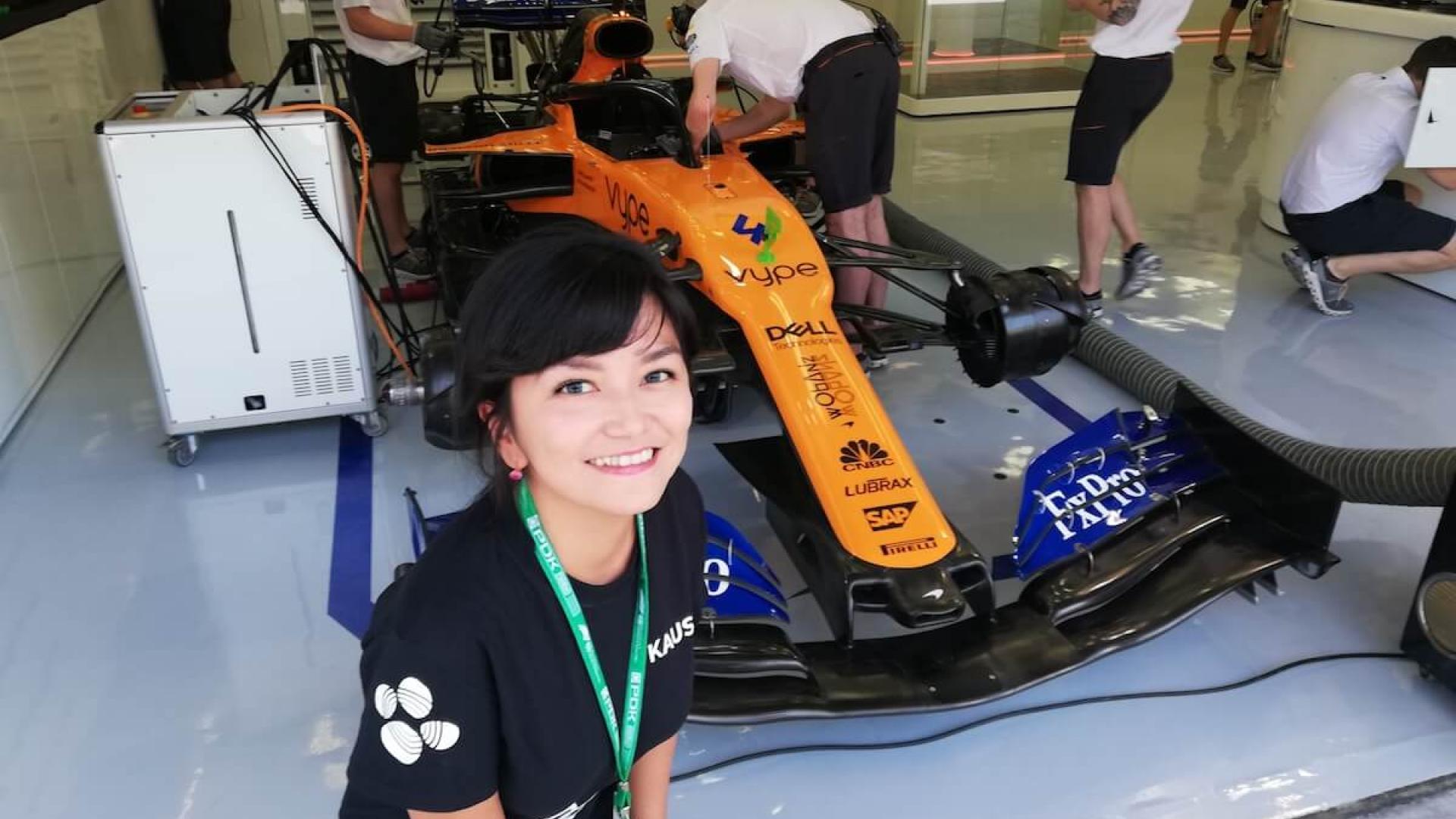-
By David Murphy, KAUST News
In Formula One (F1) motorsport, every possible angle, calculation, configuration, design feature, equation, permutation and technique is accounted for and studied with extreme precision.
Over F1's storied 69-year history, innovative engineering coupled with meticulous design has remained of paramount importance. F1 teams constantly call on their designers and engineers to push the limits of their machines in pursuit of the coveted annual Formula One World Drivers' Championship and the Formula One World Constructors' Championship.
Car construction details range from the potentially lifesaving design of the driver's cockpit to the streamlined turbocharged V6 engines that power the complex machines, which are capable of reaching speeds of 350 km/hr with an average 0-60 acceleration capability of between 2.1 to 2.7 seconds. Every step in the design process is meticulously worked on to deliver a car capable of reaching optimum performance on race day while the car still abides by the stringent race and safety regulations sanctioned by the sport's governing body, the Fédération Internationale de l'Automobile.
![]()
Formula 1 cars feature extensive and meticulously planned details to ensure they reach optimum performance on race day while still abiding by strict safety standards. Image courtesy of Shutterstock.
KAUST at the 2019 Bahrain Grand Prix
The race weekend is the culmination of months and years of rigorous design and testing that utilized some of the best minds in engineering, science and technology. Race events feature 10 teams comprised of two highly skilled teammates (and sometimes in-house rivals) racing their cars over a set lap-time structure.
As part of the recent five-year research and development (R&D) partnership agreement between KAUST and McLaren Racing Limited, a group of the University's Clean Combustion Research Center (CCRC), Extreme Computing Research Center (ECRC) and Computer, Electrical and Mathematical Science & Engineering (CEMSE) division students and research scientists attended the 2019 Formula 1 Bahrain Grand Prix (GP) from March 29 to 31.
The KAUST group, which included five Ph.D. students—Gustav Nyrenstedt (CCRC); Altynay Kaidarova (CEMSE); Diego Rojas Blanco (ECRC); Kiran Yalamanchi (CCRC); and Vijai Shankar Bhavani Shankar (CCRC)—joined members from McLaren at the Bahrain International Circuit to see the results of the nascent partnership.

KAUST Ph.D. students are pictured here at the Bahrain International Circuit in March attending the 2019 Formula 1 Bahrain Grand Prix. File photo.
The students spoke to KAUST News about the experience of attending and observing an F1 race; the rigorous preparations pre-race; the adrenaline, glitz and strategizing of the main event; and the shared hopes for a collaborative future between KAUST and McLaren.
Gustav Nyrenstedt:
I did not have to think twice when I was asked to come visit the McLaren Formula 1 team at the 2019 Bahrain GP. Of course, it was an excellent opportunity to see our center's research being tested in one of the most demanding environments on Earth. As an engine researcher, I realized how complex collaborative research is and how much we have to think about when applying fundamental research in the real world of F1 racing. Fuels, efficiency and cooling systems are just some of the things that [make] the difference between a place on the podium and the driver risking his life in the next turn.
Being at the Bahrain GP taught me what it means to be consistent and committed in everything you do by simply looking at the team's preparations before the race. Seeing McLaren driver Carlos Sainz sitting next to you just hours before the race, relaxed but extremely focused, taught me how I need to be to reach the top. Then I look[ed] left and [saw] veteran McLaren driver Fernando Alonso, and to my right I [saw] David Beckham, showing how huge [the] event actually [was]. In my more difficult days, I will think of this experience and suddenly smile again. This is the [kind of] opportunity that life at KAUST brings.
Altynay Kaidarova:
The friendly environment [and] collaborative and united spirit [were] felt throughout our stay with the McLaren team. We had opportunities to observe the team's preparation process before the Grand Prix and [their] carefully planned practice sessions on the pit lane. The hard work of the McLaren team was [also seen] in their highly organized and well-equipped garage. Through the headphones and multiple display screens, we could listen to the conversation [between] McLaren headquarters in the United Kingdom, the operational team in Bahrain and two drivers in the specially designed room.
McLaren partnerships manager Katie Neck emphasized the importance of collaborations with institutes such as KAUST for further car improvements. In particular, we discussed the usage of sensory technology in F1 and the importance of telemetry data. We have continued this conversation with Stephen Watt, the head of electronics at McLaren, who is interested in applying our airflow sensor technology for analysis of the aerodynamic performance of the car, as well as [using the] packaging and environmental capabilities of the sensors that we are developing at KAUST.

KAUST Ph.D. students Diego Rojas Blanco (left) and Altynay Kaidarova (right) stand in front of a McLaren car at the recent Formula 1 Bahrain Grand Prix. File photo.
Read the full article
